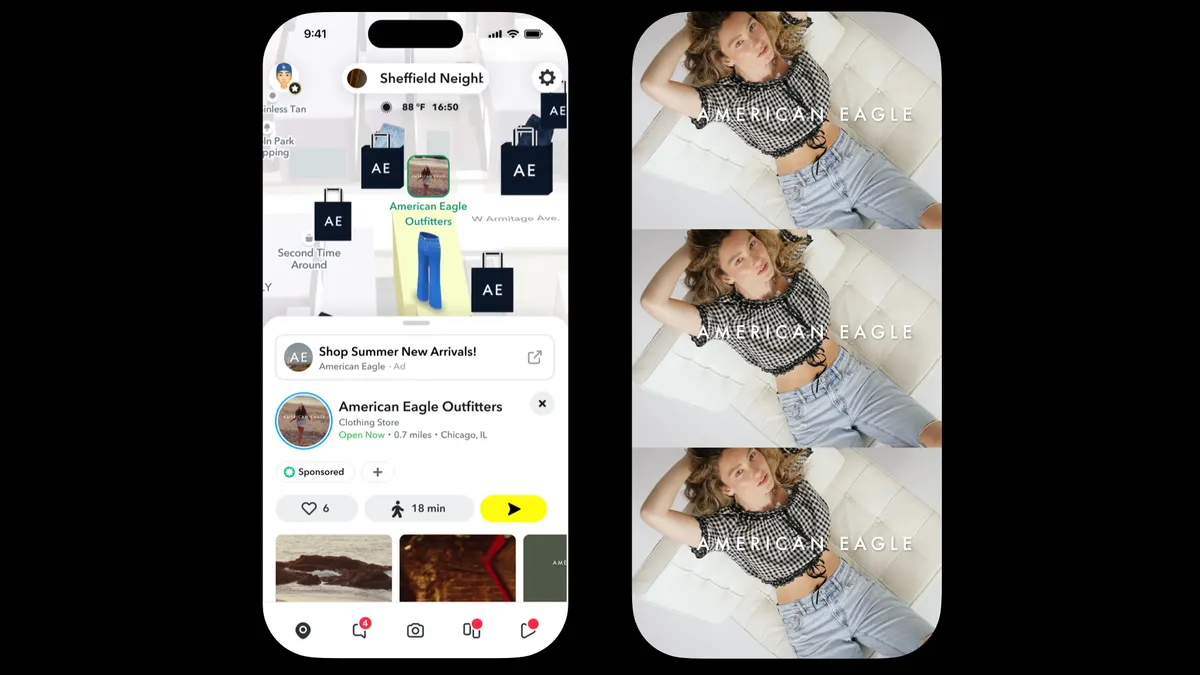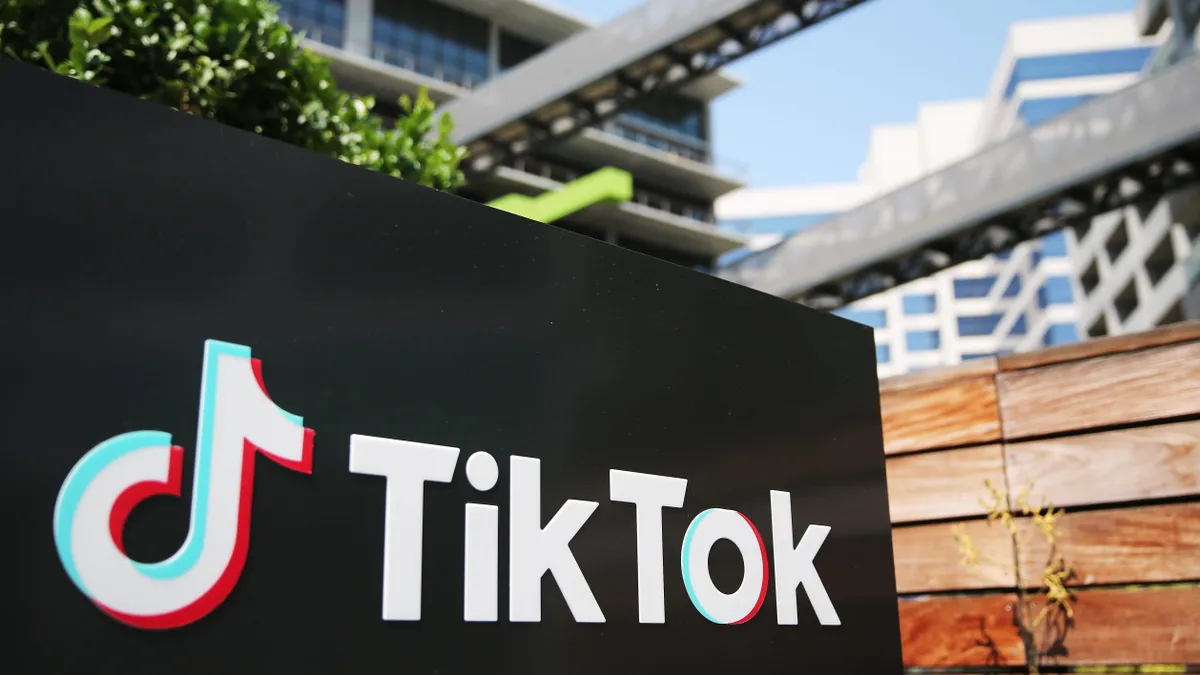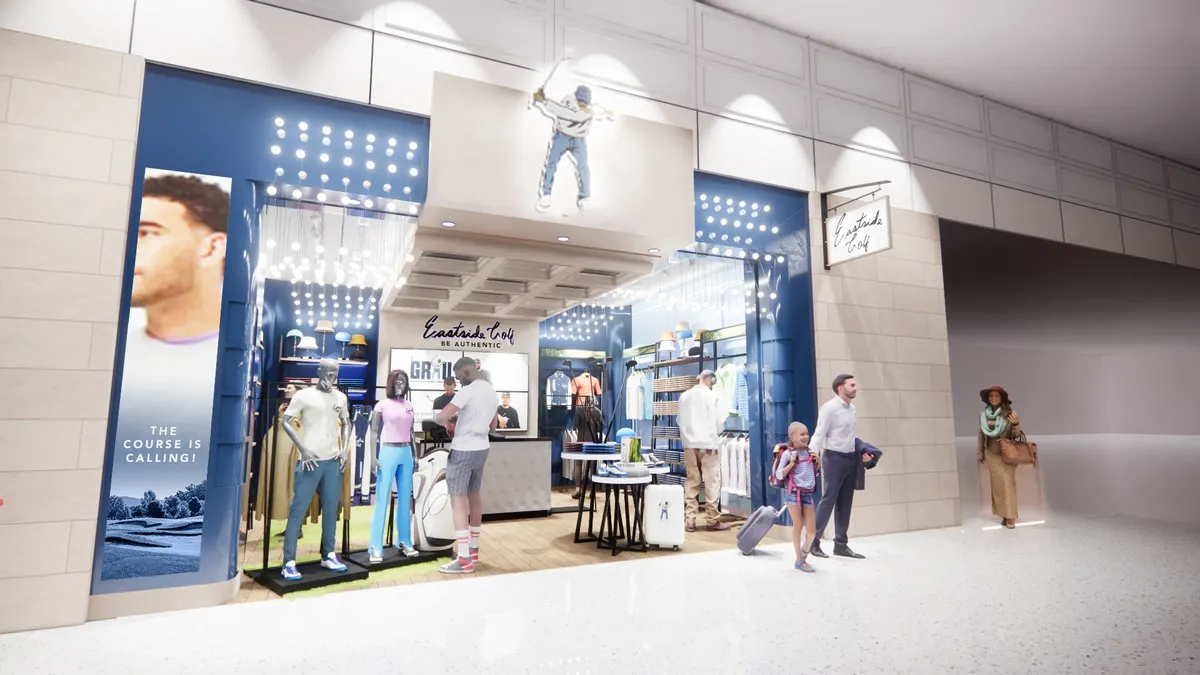Picture this: A customer walks into their favorite store, grabs a few shirts to try on and heads to the changing room. A digital mirror with an RFID chip records the items chosen and sends product information to the company’s server, which selects a few additional products to cross-sell based on the customer's selection.
These personalized recommendations appear on the mirror within milliseconds, allowing the customer to simply select a size and color to signal to a store assistant that he or she would like to try that on too. Using the mirror, the customer can see product details, Instagram posts about the item and whether they’re available for pickup.
If this sounds like a futuristic retail world, that's because it is — but it may be where retail marketing is heading, at least according to Joey Moore, director of product marketing for digital marketing company Episerver.
"To fight against the likes of Amazon, retailers need to up their game when it comes to experiential retail and AI can really sit at the heart of that," Moore told Retail Dive, adding that these kinds of "stand-out experiences" are a key differentiator for retailers. "If you’re a transactional website with a buy button that doesn’t offer your customer anything more than that, you’ve got to start thinking about your future."
Designing a marketing strategy for the new era of retailing isn't just about using shiny new technologies like AR, VR and AI, though. Retailer marketers today need to adjust to a shopping experience that is increasingly personalized and engagement-driven, while keeping their core brand message intact.
Maintaining a core, convincing message
Amid challenges in the changing retail environment, many retailers (especially department stores), are struggling to maintain a strong sense of identity and impact with shoppers — two things they can't afford to lose.
Jared Blank, senior vice president of data and insights at Bluecore, attributes part of this to the immense pressure the retail sector has faced as of late, which makes it difficult for retailers to stick with a marketing strategy long enough to see results, especially for those like Sears and Kmart, which are suffering loss after loss.
"When you’re on life support like that, all that matters is that you have enough money to pay your employees and to pay for your inventory," Blank told Retail Dive, adding that during tough times a clear and convincing brand message often falls by the wayside. Before retailers reach that point, though, Blank said they often lose sight of their value proposition.
"Macy’s has not thought about — in a world where Amazon has taken the majority of their market share — who they are and what they offer to the consumer."

Jared Blank
SVP of data and insights at Bluecore
"Macy’s has not thought about — in a world where Amazon has taken the majority of their market share — who they are and what they offer to the consumer. And now they’re getting cut off on the bottom end by T.J. Maxx and other off-price retailers," Blank said, noting that it’s "incredible" how the department store allowed Amazon to cut into their apparel category. "To be honest, I am not clear what Macy’s does for a living."
On the flip-side of that coin are digital-first companies like Sephora and Warby Parker, which use a strong brand identity to engage customers both online and off. Adam Swart, vice president of marketing at Simple Booth, told Retail Dive that these seamless shopping experiences are created by having touchpoints online, on mobile and in-store.
"Bringing social back into the real world is really important and retailers who are doing that right will be having conversations with their consumers at all touchpoints, whether that’s in real life, in person or online. And I think Sephora’s really nailing that," he said.
Consumers don’t want just any kind of engagement, though. They want brand interaction that feels authentic and personalized. A recent study by the IBM Institute of Business Value and the NRF showed that the majority (62%) of Gen Z shoppers are frequently attracted to brands that are new and fun, while 55% choose brands that are eco-friendly and socially responsible and 53% select brands that understand them as an individual.
"What you want to be able to do is have a customer that shops online on Monday, buys in-store on Tuesday and then isn’t bugged with product information on Wednesday when they’ve already bought the item."

Joey Moore
Director of product marketing at Episerver
Lizz Kannenberg, director of content at Sprout Social, suggests retailers engage with customers on the platforms that they’re already using: social media.
"Brands that are doing [social media marketing] especially well are those that acknowledge that there is an offline experience or product with an online presence," Kannenberg told Retail Dive. Warby Parker is one of Kannenberg’s favorite examples: The eye-glass retailer allows customers to order five pairs of glasses and try them on at home before making their final decision, but they also encourage customers to take selfies in their glasses and post them to social media with the hashtag #warbytryon so friends can help them decide.
"They know that their customer base is going to be taking selfies anyway and they take advantage of that and encourage their customers to interact with them through it," Kannenberg said.
Experimenting with in-store tech
While we’re already seeing some retailers stepping boldly into the space of in-store technology — from cashierless checkout efforts like Amazon Go and Walmart’s Scan & Go to Sephora’s Beauty TIP stores — several analysts say we can expect much more in the future.
According to Moore, retailers are still undergoing a good deal of education when it comes to AI capabilities, but he believes that as simple tasks begin to be carried out by computers, that will allow brands the time they need to focus on being creative with their marketing strategies, especially when it comes to in-store tech.
"There’s going to be a real drive to differentiate on customer experience," Moore said. "The brands that are doing well and surviving during these challenging times are being really playful and experimental [with in-store tech]. I’m optimistic in that regard."
The digital mirror that one of Moore’s clients uses depicts a retail landscape in which shoppers interact almost entirely with technology rather than store associates — providing just one example of the form that in-store technology may take in the future.
While digital mirrors are not ubiquitous yet, the concept of experiential retail they embody is on the rise. Neiman Marcus, for example, has been working on an in-store "memory mirror" for the last two and a half years.
Indeed, Swart notes that transactional retail is "dying on the vine," a great example being the lack of customer service and personal attention consumers receive at big-box retailers.
Recalling a Christmas visit to one such retailer, Swart said that there was "no ambiance, bad elevator music, no personalization, no contact at all — I could have walked in and walked out and not made eye contact with one person."
As consumers come to expect more tech-heavy — and therefore more personalized — shopping experiences, retailers that don’t match up might find themselves struggling to maintain customer satisfaction. That being said, Moore warns retailers to be wary of adding in-store features that do nothing to add to the customer experience and exist "just to be a shiny piece of technology."
Putting customer data to use
Personalized product recommendations, such as those found on Amazon, are perhaps one of the most well-known uses of customer data. Information on previous purchases, as well as customer demographics, help many retailers target their customers with relevant products and services. Even those efforts, however, are in their infancy.
"The change we’re going to see is [marketers] beginning to take the data they know about their customers and match it up with the data they know about their product," Blank said. "The idea of using deep product-level data to say 'I want to do a campaign for women who would be interested in $300 leather boots' — the ability to match up that information with the people who would be interested in that product — that is the future."
Improvements in how marketers use customer data will also help solve several issues that plague retailers. As the shopping experience becomes more omnichannel than ever — with consumers shopping online, through their mobile phones and in stores — one lingering problem for retailers is how to keep up with their consumers, no matter what channel they’re using.
"What you want to be able to do is have a customer that shops online on Monday, buys in-store on Tuesday and then isn’t bugged with product information on Wednesday when they’ve already bought the item," Moore explained.
"As younger millennials and Gen Z start spending more money, a two-way dialogue between brands and individual consumers is important because that’s what they expect."

Lizz Kannenberg
Director of content at Sprout Social
This should also help out with increasing brand engagement on social media platforms, as more targeted demographics not only allow retailers to make more effective use of social media, but also relate to their audience better over the platform. Kannenberg said that this is especially true of the younger generations, who have much less of a problem with brands using social media for marketing purposes.
"Because it’s so natural for them to use social to express who they are, the brands that they interact with sort of become a badge of their personality," Kannenberg said. "It gives their peers a key to what they’re interested in, who they’re into and where they’re willing to spend their time and attention."
Even now, retailers from all different sectors have invested in influencer marketing, paying popular social media personas to advertise products to their many followers — including Instagram accounts of popular dogs for projects like The Body Shop’s "Forever Against Animal Testing" campaign.
As social media continues to be a big player in marketing going forward, Kannenberg stresses the importance of content that allows customers to interact with the brand.
"As younger millennials and Gen Z start spending more money, a two-way dialogue between brands and individual consumers is important because that’s what they expect," she noted. "If they’re putting something out on social media, then they’re expecting something back as well."
In the end, despite shifts to social media and mobile marketing; the popularity of technologies like AI, AR and VR — the heart of marketing remains with those that know who they are, who they serve and what they can offer.






















